This post may contain affiliate links. Please read our disclosure policy.
Here’s everything you need to know about cycle syncing, including how to track your menstrual cycle, FAQs, and a food and exercise plan!

Life is filled with natural rhythms: days, seasons, and even the ocean’s tides. And women have their own internal rhythm, too.
It’s called the infradian rhythm, and it’s the monthly cycle of your hormones, specifically estrogen and progesterone. Hormones impact many things about your physiology, including your nutrient requirements and exercise capability. With menstrual cycle syncing, you’re adapting your life to your regular and predictable hormonal fluctuations.
Most women think of their menstrual cycle as bleeding and non-bleeding days—and if you’re trying to get pregnant, maybe you think about ovulation as well.
The truth is, there are actually four distinct phases of your monthly cycle, and each one has specific effects on your physiology. Cycle syncing your food and exercise to your menstrual cycle can help you balance hormones naturally, feel and look better, and reduce overall stress. While it may seem overwhelming, it’s fairly easy to implement once you get into your rhythm.
Jump to:
What is Cycle Syncing?
Cycle syncing is adapting your life inputs according to the natural hormonal fluctuations of your menstrual cycle. There are four phases of your menstrual cycle. In each phase, your hormones, specifically estrogen, progesterone, and testosterone, rise and fall. Throughout your cycle, studies show shifting hormones can impact your mood, fatigue, and even your energy requirements. Understanding how these hormone shifts impact you can help you improve how you look, feel, and perform long term.
PS: I’ve written three additional in-depth articles about cycle syncing food, cycle syncing exercise, and cycle syncing skin care. Make sure to check those out after you’ve gotten all the knowledge about cycle syncing in this article!
Days of The Menstrual Cycle
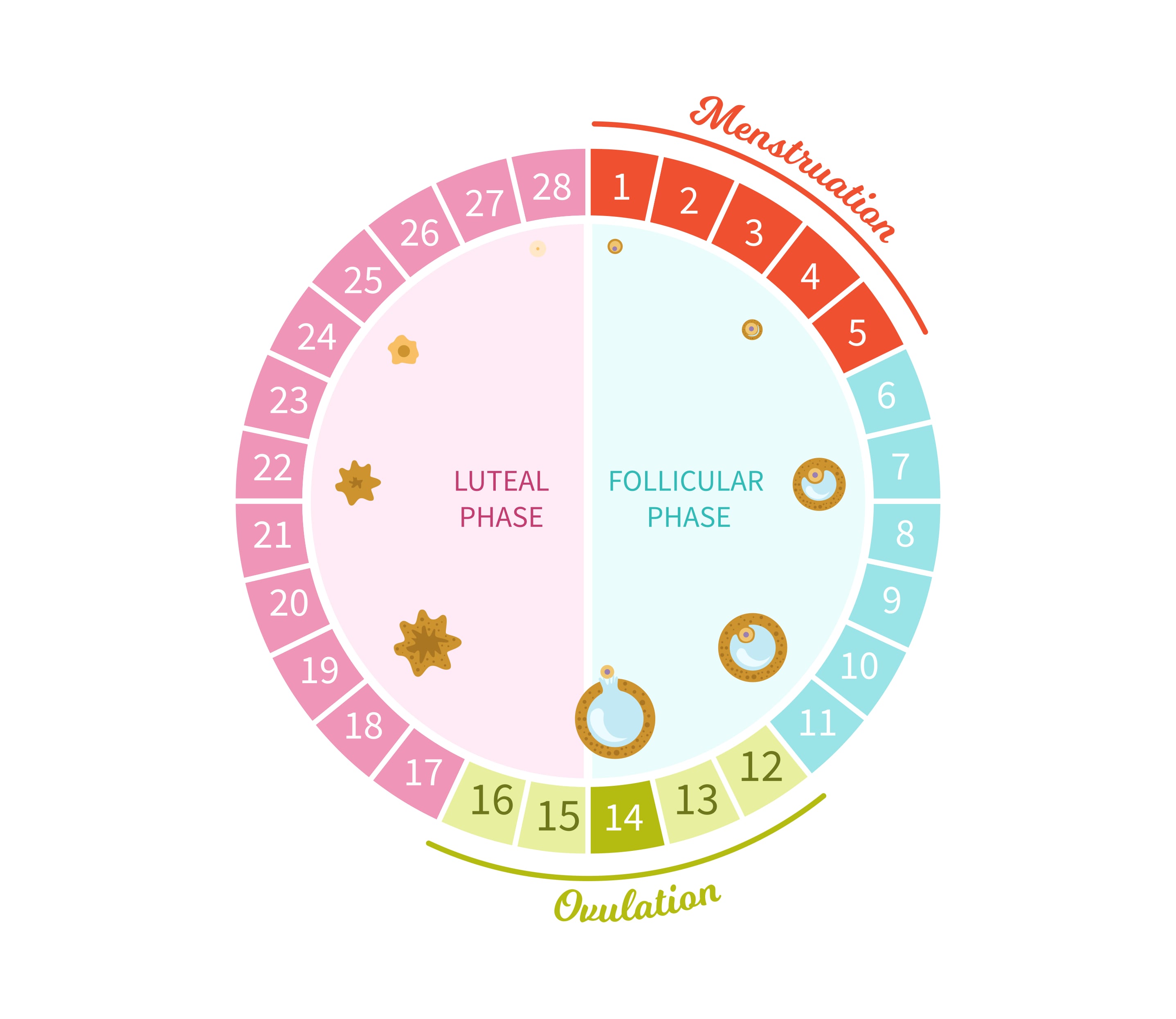
Your menstrual cycle has four phases. While the following days are set to a 28-day cycle, the exact days may vary slightly for you as there’s a range for what is considered normal when it comes to overall cycle length.
- Phase 1: Menstrual: This phase starts on day 1 of your period and can last anywhere from 3-6 days.
- Phase 2: Follicular: This begins after menstruation, typically ends around day 12.
- Phase 3: Ovulatory: This occurs around days 13-16 of your cycle. This phase lasts 3-4 days.
- Phase 4: Luteal: This phase is the longest and lasts about two weeks, roughly days 17-28. This phase occurs after you ovulate, and ends right when you start menstruating.
Tracking Your Cycles
To figure out your own personal cycle length and understand what phase you’re in, you need to track your cycles. The days of each cycle listed above are just estimates. Your phase length will be unique to your cycle.
Regular tracking is important because even women with normal cycles can see variation month to month. Plus, many women have irregular cycle lengths because of issues like chronic stress, hormone imbalance, and PCOS.
The first marker to track is the first day of your period each month. When your period ends, the menstruation phase ends and you enter the follicular phase.
To figure out when you are ovulating, you’ll track your Basal Body Temperature (BBT) and cervical mucus. Once ovulation occurs, you experience a significant rise in Basal Body Temperature. This rise is typically 0.4 degrees Fahrenheit, and the temperature shift is sustained until menstruation starts. The day just before this temperature shift is the day you ovulated.
As a secondary marker, your cervical fluid changes during ovulation, specifically right before ovulation occurs. As an egg starts to mature, your cervical fluid will increase. Right before you ovulate, it becomes more clear and slippery, similar to the consistency of egg whites.
To track these, you simply take your BBT each morning at the same time before getting out of bed with a basal thermometer. You can track your temperature changes on a printable chart, which also includes space to note changes in cervical fluid.
Once you have a clear picture of when you’re ovulating, you can make the distinction between the ovulation phase and luteal phase and begin menstrual cycle syncing.
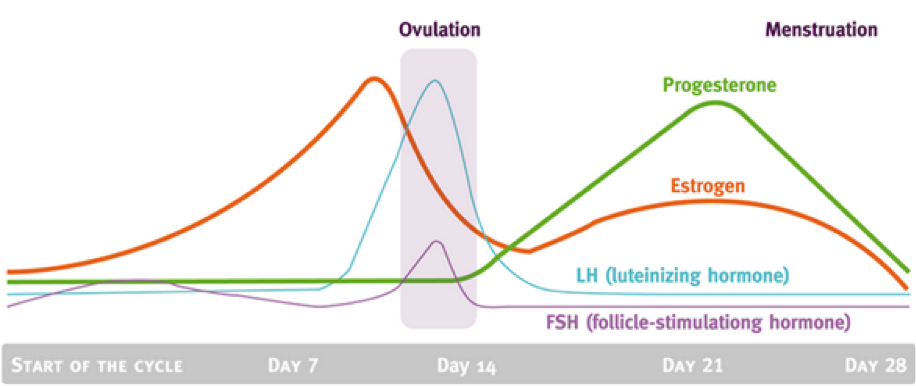
Cycle Syncing FAQS
While there is limited scientific research on cycle syncing, many women find it to be an effective way to improve health, reduce stress, and balance hormones. Ultimately, there is tremendous benefit to tracking your cycles and understanding how hormonal shifts impact you on a monthly basis. It helps you make educated decisions and plan ahead according to your physiology.
Unfortunately, the hormonal birth control suppresses hormone function so you no longer ovulate. Even if you have a monthly bleed, it’s simply the result of the withdrawal of synthetic hormones. For this reason, cycle syncing is something that is best done when you aren’t on hormonal birth control and have a monthly cycle.
If you don’t have a period and you’re not pregnant or on birth control, you can still gather helpful data by tracking your menstrual cycle. You may find that you experience temperature changes or that you’re actually ovulating. Track your cycle for about 30 days to see if you notice any variances or changes, then use the information to implement cycle syncing. I recommend tracking your cycles while also taking action to get your period back, especially if you have hypothalamic amenorrhea.
Yes! Cycle syncing can actually help you understand what phase is longer for you, and what is causing irregular periods. Simply track your cycles and shift what you’re doing based on what phase you’re in. While you implement cycle syncing with irregular periods, it’s important to also work on any root causes of irregular periods. Typically this is caused by certain hormonal balances, mainly estrogen dominance or low progesterone. I recommend implementing cycle syncing while also working to support healthy estrogen levels and adrenal function.
How it Works: The Beginner’s Guide to Cycle Syncing
As a general guideline, menstrual cycle syncing is broken down into a 4 phases. While this typically follows a 4-week (28 day) cycle, this can absolutely be customized to your cycle and needs.
Phase 1: The Menstrual Phase
What Happens: This is the phase where you are on your period.
Your physiology: All hormones, including both estrogen and progesterone, drop. Your Basal Body Temperature also drops. This triggers the body to start shedding the endometrial lining.
How You Feel: Energy levels are low on day 1, and start to recover as your period tapers off. You typically need more sleep during this time. For exercise, decrease intensity of your workouts or focus more on aerobic activity. This is a very introspective and thoughtful time, because the low levels of hormones improve communication between both sides of the brain.
It’s also a great time to focus on warming, nourishing foods like soups and stews. Incorporate foods that are rich in heme iron, like grass-fed beef, bison, clams, and oysters, which can help provide your body with protein and fat to keep blood sugar stable and restore iron levels.
Phase 2: The Follicular Phase
What Happens: This phase begins as soon as your period ends and goes until you ovulate.
Your physiology: Estrogen slowly increases, peaking just before ovulation. Your hypothalamus sends FSH (follicle stimulating hormone) to your ovaries to help mature eggs.
How You Feel: The follicular phase is a time of building energy. You typically feel more outgoing, creative, and ready for goal setting. Have a project to start? This is the time to do it. Your immune system is also high functioning at this time, so you’re less likely to get sick.
Hormonal changes actually slow down your metabolism during this phase, so cravings are lower, and continue to stay low through the ovulatory phase. You’re also more insulin sensitive during this phase due to the increasing levels of estrogen. As a result, carbohydrates are used more efficiently, which is great for fueling high intensity workouts. Try interval workouts, heavier lifts, or longer efforts.
Phase 3: The Ovulatory Phase
What Happens: Your body release an egg into the fallopian tubes and down into the uterus, where your uterine lining has rejuvenated during the follicular phase.
Your physiology: Estrogen and luteinizing hormone (LH) both peak to stimulate the release of an egg. Your fertility peaks just before you ovulate, so if you’re trying to conceive, this is the time to go for it.
How You Feel: Even though this phase is short, hormone changes are dramatic, so you might notice a dramatic change in how you feel, too. Typically, your energy is at its peak in this phase. You feel more social and inclined to be around others. High intensity workouts are ideal because motivation and energy are high, and you’re most insulin sensitive during this phase.
Collaboration and communication skills peak during ovulation too, so it’s a good time to work with others on a big projects. Your immune system remains revved by estrogen levels being high as well, which keeps you strong and less likely to get sick.
As estrogen levels rise, it’s important bring in foods that support estrogen detoxification. Leafy greens and cruciferous vegetables, like kale, collard greens, cabbage, broccoli, and cauliflower are packed with a phytonutrient called diindolylmethane (DIM), which helps metabolize estrogen.
Phase 4: The Luteal Phase
What Happens: Progesterone rises (hence that shift upward in your Basal Body Temperature), priming the uterus for the arrival of a fertilized embryo.
Your physiology: Progesterone peaks. Estrogen also rises slightly. Then, hormone levels drop right before your period starts. This downward shift is responsible for the symptoms of PMS.
How You Feel: The first half of the luteal phase is great for getting things done. You might have better focus for detail-oriented tasks as well. Your body is less insulin sensitive during this phase, so it’s a great time for strength training and aerobic efforts.
Your immune function decreases to prevent the immune system from potentially attacking a fertilized embryo, but energy expenditure increases 8-16%. That means you don’t just feel hungrier, your body is actually burning more fuel and requires an average of 250-300 more calories! During this phase, your body’s stress response is heightened and you release more cortisol in response to stress. So, stress management is crucial during this time. It’s OK to say no!
Once hormone levels drop, so does your energy levels. When that happens, it’s time to scale back.
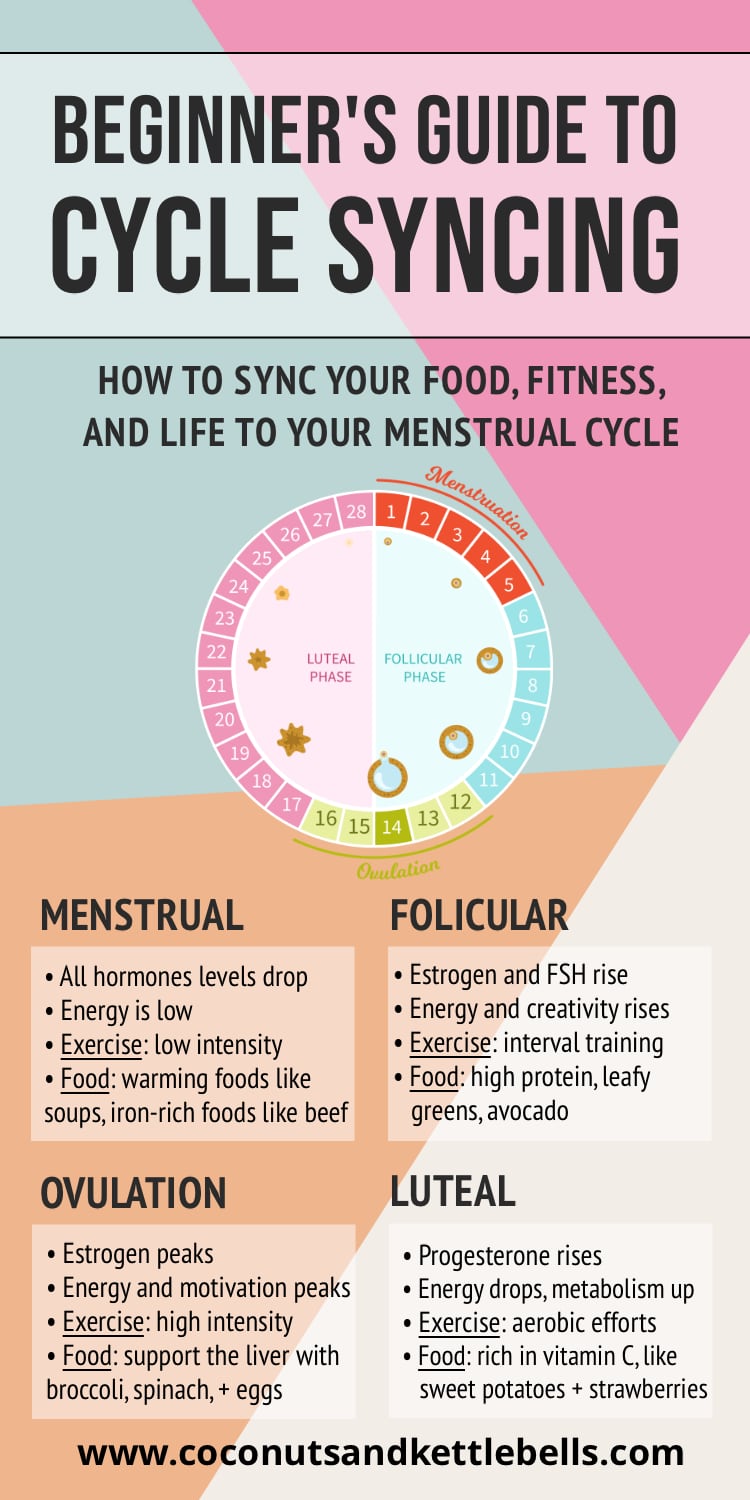
Menstrual Cycle Changes
Cycle syncing turns each phase of your menstrual cycle into a gift. Your period is not a curse or something to dread. In fact, it’s the right time to relax, recharge, and reflect. You don’t have to fight your natural rhythms. In fact, you can work with them to bring out the best outcome.
Instead of trying to power through your cycle, you can lean into it, embrace it, and use it to make your life run more smoothly. Once you go with this flow, you’ll notice improvement in how you feel, your hormones, and your overall health.
Have you tried cycle syncing? How has cycle syncing helped you balance hormones and improve your health? Share with me below!
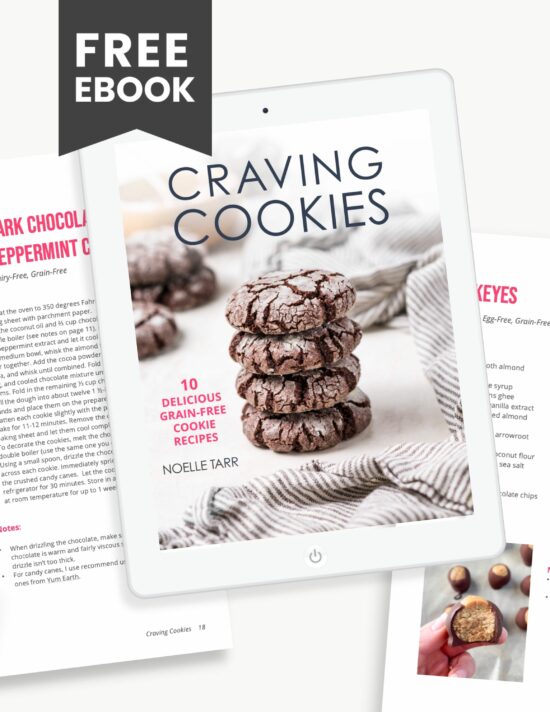
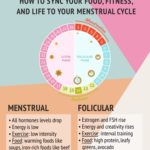
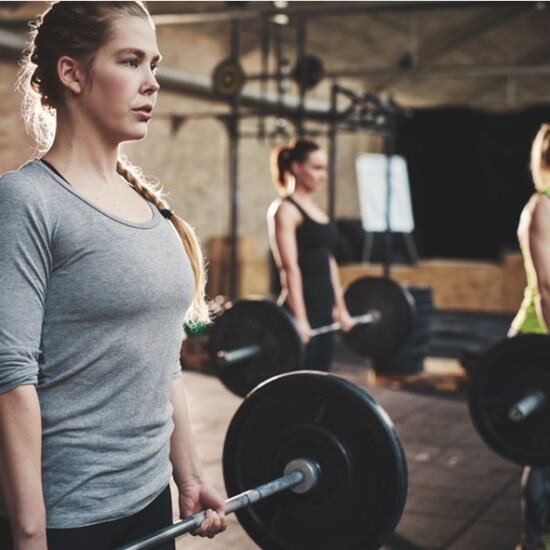

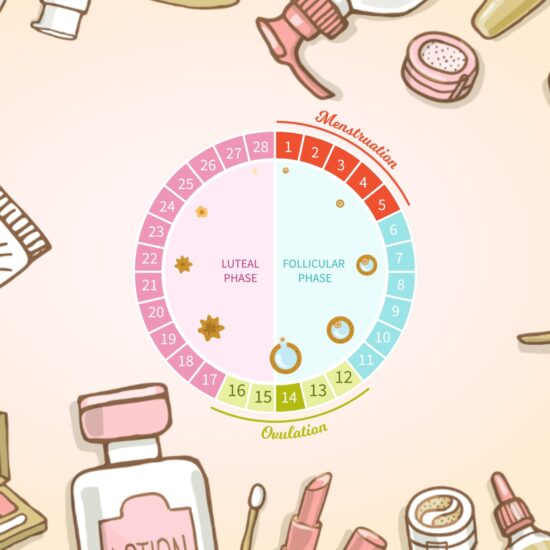
Cuthbert Pandey says
Thanks for share. The post is useful
Katie says
I am vegan and focusing on becoming more whole food
Plant based foods. What would be a good plant source of iron rich food for the menstrual phase?
Noelle Tarr, NTP, CPT says
Hey Katie! None that are rich in heme iron. You’ll likely need to eat foods enriched with iron.
Johanna says
Hi! Good plant sources of iron include lentils, chickpeas, beans, tofu, cashew nuts, chia seeds, ground linseed, hemp seeds, pumpkin seeds, kale, dried apricots and figs, raisins, quinoa and fortified breakfast cereal.
Lori Edwards says
Does this work of you have had a partial hysterectomy, no thyroid, and premenopausal? I need guidance please :).
Noelle Tarr, NTP, CPT says
Hey Lori! If your ovaries are still making hormones and you get a period (even if it’s irregular), you can do cycle syncing. For perimenopause, check out Natural Remedies for Perimenopause Symptoms: Supplements, Treatments, and Food.
Krystyn B says
This is all brand new to me and I’m so intrigued!! I’m so glad I found your article. Do you recommend an app to help track all four cycles?
Rachel Patrick says
Hi, I am just wondering where you get your information about a woman feels in relation to her physiology during different phases of her cycle? Interesting information! Do you have a reference list? Thank you!
Noelle Tarr, NTP, CPT says
About a woman’s feels? What exactly do you mean? Thanks!
Damon Cox says
So if I am on hormones therapy replacement for female it would work for me